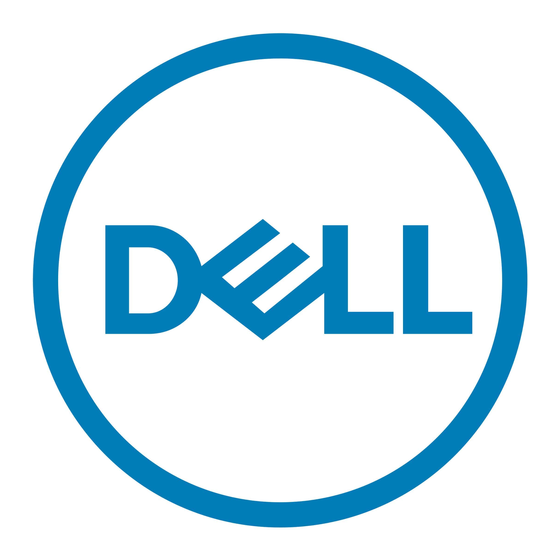Dell DX6000G Посібник з налаштування та конфігурації - Сторінка 4
Переглянути онлайн або завантажити pdf Посібник з налаштування та конфігурації для Сервер Dell DX6000G. Dell DX6000G 23 сторінки. Rack installation instructions — static rails
Також для Dell DX6000G: Посібник користувача (48 сторінок), Примітки до випуску (7 сторінок), Встановлення в стійку (2 сторінок), Встановлення в стійку (2 сторінок)

Chapter 1. Welcome to DX Storage CFS
1.1. Overview of DX Storage CFS
DX Storage Cluster File Server (CFS) is a native DX Storage application that presents a DX Storage
cluster as a standard Linux file system, enabling the use of DX Storage by software that uses a file
system. You can also layer a network file service over DX Storage CFS using Samba or NFS. CFS
separates file data stored directly in DX Storage from file metadata stored in DX Storage via the
Cluster Name Space (CNS).
To enhance performance, the CFS process uses the local file system as a spool/cache for files. This
local cache is where user files are written before they get spooled to DX Storage and where they will
be accessed on subsequent reads if locally available. The cache/spool size is managed by evicting
files based on a least recently used basis when space needs to be reclaimed.
The Cluster Name Space (CNS) also uses DX Storage to store name space records for the file
system structure and metadata (owner, permissions, etc.), fulfilling the role typically performed by
a database but without the scalability and management concerns. CNS uses a RAM-based cache
to deliver metadata objects that are in high demand. Name space modifications and updates are
continuously flushed to DX Storage via a background process.
Recoverability for both CFS and CNS are enhanced by using the Linux machine's local hard disk or
shared storage for journaling of in process events. In the event of a power failure or system crash,
the processes are restarted automatically and any changes not recorded in the namespace or
spooled to DX Storage are replayed from the journal to prevent data loss. A process monitor runs
at all times to restart a CFS or CNS process in the unlikely event of a process crash. All process
monitoring and recovery activities appear in the syslog for management purposes.
1.2. About this Document
1.2.1. Audience
This document is intended for people in the following roles.
1.
Storage system administrators
2.
Network administrators
3.
Technical architects
Throughout this document, the storage system administrator and network administrator roles will be
referred to as the administrator. The administrators are normally responsible for allocating storage,
managing capacity, monitoring storage system health, replacing malfunctioning hardware, and
adding additional capacity when needed.
1.2.2. Scope
This document covers the steps needed to deploy and configure DX Storage CFS. The reader is
expected to have a background in networking, basic knowledge of Linux operating systems, and
optional experience with NFS, CIFS, SAMBA or other file server clients.
Copyright © 2011 Caringo, Inc.
All rights reserved
1
Version 2.6
February 2011
